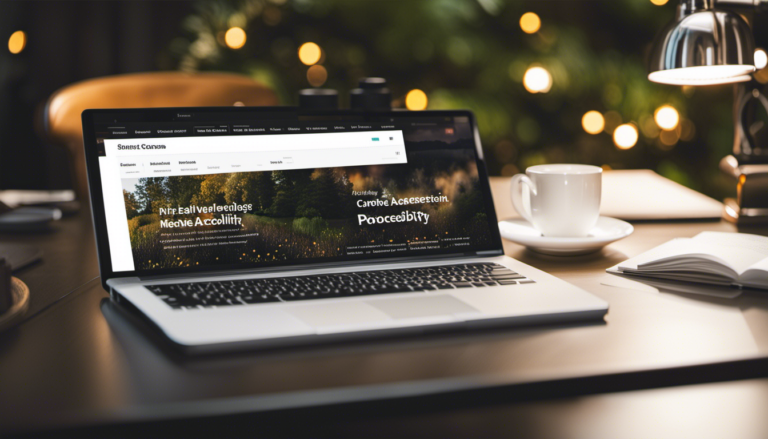Are you ready to unlock the secrets of HTML?
Get ready to dive into the essential building blocks of web development and discover the power of HTML elements.
From headings and paragraphs to links and images, these fundamental elements are the key to creating stunning websites.
In this article, we will guide you through each element, explaining their purpose and how to use them effectively.
So, grab your coding tools and get ready to master HTML like a pro!
Key Takeaways
- Headings (h1, h2, h3, etc.) provide structure and hierarchy to webpage content.
- Links (a) connect webpages and enhance navigation and user experience.
- Images (img) enhance visual appeal and engagement on websites.
- Forms (form, input, button) allow user input and data submission for interactive web pages.
Headings (h1, h2, h3, etc.)
Headings, such as h1, h2, and h3, provide a way to structure and organize the content of a webpage. They play a crucial role in conveying the semantic importance of different sections within the HTML document. By using headings, you can give hierarchy and meaning to your content.
For example, an h1 heading represents the main title or heading of the page, while h2 and h3 headings are used for subheadings and lower-level titles, respectively.
When it comes to web design, there are best practices for using headings effectively. Firstly, it is important to use headings in a logical order, starting with the main title as h1 and following a hierarchical structure from there. This helps search engines and screen readers understand the content better.
Secondly, headings should be used sparingly and not just for styling purposes. Using too many headings can confuse users and dilute the impact of important headings.
Now, let’s move on to paragraphs (p), which provide a way to group and organize blocks of text within a webpage.
Paragraphs (p)
Paragraphs, also known as ‘p’, are used to organize and structure text on a webpage. They play a crucial role in presenting information in a readable and user-friendly manner. When writing paragraphs, you have various formatting options available. You can change the font size, style, and even add colors to make your text stand out. Additionally, you can apply different alignments such as left, right, center, or justified to enhance the visual appeal of your content.
Proper indentation is important when working with paragraphs. It helps to visually separate different sections, making the content easier to scan and understand. By using indentation, you can create a clear hierarchy, allowing readers to identify main points, subpoints, and supporting details effortlessly. This ensures that your text flows logically and cohesively, enhancing the overall readability of your webpage.
Now, let’s move on to the next topic, which is ‘links (a)’. Links are an essential element in web development as they allow users to navigate between different webpages. They provide a way to connect related content, external resources, or even different sections within the same webpage. So, let’s dive into the world of links and explore their significance in creating a seamless browsing experience.
Links (a)
Now, let’s explore the significance of links (a) in creating a seamless browsing experience. Links are the backbone of the internet, connecting web pages together and allowing users to navigate effortlessly. They play a crucial role in link building strategies, helping websites gain visibility and improve their search engine rankings.
One of the key elements of a link is the anchor text, which is the clickable text that appears on a webpage. The anchor text provides context and relevance to the linked page, making it easier for search engines to understand the content and rank it accordingly. Strategic use of anchor text can greatly impact a website’s visibility and organic traffic.
To illustrate the importance of links, let’s take a look at the following table:
| Column 1 | Column 2 | Column 3 |
|---|---|---|
| Row 1 | Row 1 | Row 1 |
| Row 2 | Row 2 | Row 2 |
| Row 3 | Row 3 | Row 3 |
| Row 4 | Row 4 | Row 4 |
As you can see, links are the bridge that connects different web pages, allowing users to seamlessly navigate from one page to another. They enhance the user experience and facilitate the flow of information.
Next, we will delve into the world of images (img) and explore how they can enhance the visual appeal and engagement of a webpage.
Images (img)
To enhance the visual appeal and engagement of your webpage, images (img) can be used effectively. Images play a crucial role in capturing the attention of your audience and conveying information in a visually appealing manner.
Here are some important points to consider when using images on your webpage:
- Image optimization: Optimizing your images is essential to ensure fast loading times and an optimal user experience. Compressing images, using the correct dimensions, and choosing the right file format are some ways to optimize your images.
- Image file formats: There are various image file formats to choose from, including JPEG, PNG, and GIF. Each format has its own advantages and use cases. JPEG is best for photographs, PNG for images with transparency, and GIF for animated images.
- Alt text: Adding alt text to your images is crucial for accessibility purposes. Alt text provides a description of the image for users who are visually impaired or are using assistive technologies.
- Image attribution: If you are using images that you did not create yourself, it’s important to provide proper attribution to the original creator.
Now that you understand the importance of images, let’s move on to the next section about lists (ul, ol, li).
Lists (ul, ol, li)
Lists can be created using the HTML elements ul, ol, and li. These elements allow you to organize content in a structured manner. The ul element represents an unordered list, where the order of the items doesn’t matter. On the other hand, the ol element represents an ordered list, where the items are numbered or given a specific order. Each item within a list is defined using the li element.
Nested lists can also be created by placing one list within another. This allows for further organization and hierarchy within your content. You can nest as many lists as needed to meet your specific requirements.
To enhance the appearance of your lists, you can apply various list styling techniques. CSS can be used to customize the bullet points or numbers, change the spacing between items, and add different backgrounds or borders.
Now that you have learned about lists, let’s move on to the next topic: forms. Forms allow users to interact with a website by inputting data and submitting it.
Forms (form, input, button)
Forms can be created using the HTML elements form, input, and button, allowing users to input data and submit it. These elements are essential for creating interactive web pages that collect information from users.
With form validation, you can ensure that the data entered by the user meets specific criteria before being submitted. This helps maintain data integrity and prevent errors.
Form submission is the process of sending the data entered by the user to a server for further processing. This can be done by clicking a submit button or pressing the Enter key. The server then processes the data and may return a response to the user.
Forms are commonly used for various purposes, such as user registration, contact forms, and search boxes.
Now, let’s move on to the next topic about tables, which are used to display data in a structured manner.
Tables (table, tr, td)
Tables are used to display data in a structured manner, and they are created using the HTML elements table, tr, and td. Tables provide a convenient way to organize and present information, making it easier for users to understand and interpret data.
When styling tables, you can use CSS to customize their appearance, such as setting the width, height, borders, and background colors of the table cells. This allows you to create visually appealing tables that match the overall design of your website. Additionally, you can add headers to your tables using the th element, which helps to identify the content of each column.
It’s important to consider table accessibility when building your website. This means ensuring that tables are properly structured and labeled, so that users with disabilities can navigate and understand the content. You can use the scope attribute to associate header cells with data cells, and the caption element to provide a brief description of the table’s content. Adding alternative text to images within tables is also crucial for screen readers to convey the information effectively.
In conclusion, tables are a valuable tool for presenting data in a structured manner. By styling them appropriately and ensuring accessibility, you can enhance the user experience and make your website more user-friendly for all visitors.
Conclusion
So there you have it, my dear reader, a delightful journey through the marvelous world of HTML elements.
From the majestic headings that command attention to the humble paragraphs that weave words together, each element plays a vital role in the grand symphony of web design.
And let us not forget the mischievous links that whisk us away to new destinations, the captivating images that paint a thousand words, and the organized lists that keep us in perfect order.
With forms that eagerly await our input and tables that neatly arrange data, HTML elements truly are the essential building blocks of the internet.
So go forth, my knowledgeable friend, and create your digital masterpiece with the precision and logic that only HTML can provide.
Happy coding!







